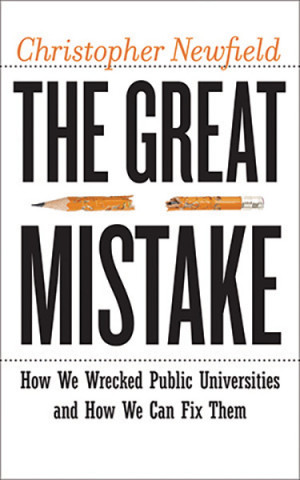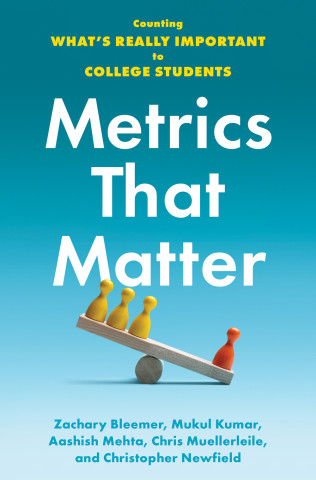What's coming are price hikes--big ones in UC Care. (In contrast, the negative number at left is the subpar status of UC's benefits relative to market). That's the unloved UC self-insurance plan that was implemented last year over a hue-and-cry about its incomplete and inferior coverage. On Tuesday, after voting in the midterm election, I went to the Santa Barbara Senate's forum on changes this year (prices here), which revealed the obstacles to improvements going forward--both at the system level and at UCSB. Here I'll discuss UC and UCSB together.
The issue comes with a history that began last fall, with the gradual unveiling of new UC health care plans and of their various deficiencies. The specific UCSB issue was the absence of the Tier 1 version of UC Care in the Santa Barbara area, which made medical costs higher for UCSB employees than for their peers on other campuses. After UCOP officials endured a large, angry meeting on the Santa Barbara campus, a patch was arranged. Sansum Clinic would offer Tier 1 services for a year, with a possible continuation. But Cottage Hospital, the best and only full-service hospital in the Santa Barbara area, would be available exclusively under Tier-2 payment conditions for UC Care (and under normal HMO conditions for HealthNet clients). Tier-2 has much higher payments for patients, but underlying cost inequities and access problems were not resolved.
(All our posts and links on the topic are listed here; you can find, for example, my initial review of UC Care changes and its tier system; coverage of UCOP's response; Michael's perspective from a medical campus; a Berkeley breakdown of UC Care's reduced services and increased costs; my cost estimate for a UCSB tier-1 fix (at the bottom); and a Spring 2014 summary of people's problems as they tried to use the new system. We are still providing a forum for experiences at Share Your UC Care Story.)
On the eve of last Tuesday's Senate forum, the UCSB Faculty Association posted a statement on UC Care that itemized these ongoing inequities and problems. It called for Chancellor Henry Yang to appoint a committee empowered to meet with UCOP officials, including President Napolitano, in order to fix the health care plans. The goal would be for "Central Coast employees of UCSB [to] have access to quality health care on a basis that is not inferior to that at other UC campuses." UCSB FA president Nelson Lichtenstein and other FA members came to the Senate meeting with copies of the letter, and repeated the call.
What are the chances of a real fix? As far as UCOP is concerned, there is nothing to fix. I say this because they declined Senate divisional chair Kum-Kum Bhavnani's invitation to send officials to speak with UCSB Senate members at the meeting, and because of a UC-wide survey their Human Resources department published in mid-October under the headline, "UC Faculty, Staff, and Retirees Satisfied with Current Medical Plan Offerings." Chair Bhavnani presented the major findings. Respondents saying they were satisfied or very satisfied with their plan, their new plan, their ability to see a primary care physician, or their ability to see a specialist, were all in the mid-70s out of a hundred. For example, "77 percent of those enrolling in a new plan said they were satisfied with the new network." Although there were early reports of prescription drug problems, satisfaction rates there hit 90 percent (slide 20).
Broken down by campus, Berkeley and Los Angeles have 76 percent and 75 percent satisfaction rates. The formerly unhappy Riverside comes it at 76 percent satisfied, above the medical campuses Davis at 74 percent and Irvine at 71 percent. The only real holdout is Santa Cruz at 54 percent. Santa Barbara, the least well-served, is in between, at 67% agreeing or strongly agreeing that they are satisfied with their plan. The absence of a large dissatisfied minority may have enabled the price hikes I'll get to in a minute. In any case, the rollout appears in the survey as a major triumph.
The major exception to this pattern across the system was UC Care. There, the percentage who agree/strongly agree that they are satisfied with their plan falls to 46 percent (slide 10). UC Care is off the charts in dissatisfaction with access to correct information about the plan (slide 22). In other areas UC Care is comparable, but it's obvious even in this survey that major work still needs to be done.
An implied question at the forum was whether UCOP is going to set systemwide health care policy on the basis of surveys like this. My guess is yes, though that's a bad idea, partly because of the survey and partly because of the management theory behind it. First, the survey has a fairly low response rate (26 percent), in part reflecting the fact that it was administered during a two-week window that began right at the end of the academic year for eight of the ten UC campuses. Secondly, the health care system's biggest problems occurred at sites that are too small a percentage of the whole to budge the totals (the medical centers and national laboratories were included).
Perhaps most seriously, the survey doesn't distinguish among levels of use, which artificially increases satisfaction rates. I pay for UC Care but didn't use it once during my first year, so would have no reason to express dissatisfaction with UC Care. The meaningful satisfaction figure is the share of active users of the plan, ideally broken down by level of use. Those numbers, if they exist, were not published.
The poor management theory behind surveys is that you can manage by majority opinion and set the minority aside. That marginalizes individual experience, and in health care it is a way of favoring the healthier share of the population over the sick. This strategy produced such serious cost and public health problems with the existing private health care system in the US that the Affordable Care Act, for all its public subsidizes for private providers, now regulates it. The UC system doesn't reject sick employees, and yet this survey, normally construed, encourages UCOP to treat the dissatisfied as outliers who can be safely ignored. Those outliers include the entirety of the UCSB workforce, who constitute about 3 percent of the system's healthcare enrollment.
Management by survey may have encouraged UCOP to end last year's policy of holding down employee contributions. You'll remember that UC Care's premium, defined as lower than that of Anthem/Blue Cross, was a leading selling point. I did some quick calculations before the meeting and discovered that my UC Care premiums will be rising by over 17 percent. This is of course a systemwide price. Lower income employees will see a rise of about 20 percent. In all brackets, UC Care prices rose from 2 to over 3 times the rate of HealthNet and other preexisting commercial plans. Chair Bhavnani presented a spread sheet that displayed cost increases for all plans at all income brackets, and they are disturbing. Will they be repeated for 2016 and again for 2017 and for the years after that? No one from UCOP was there to answer this or any other health care question.
I asked Chair Bhavnani about UCOP's justification for UC Care price hikes that are more than double projected cost increases for the medical sector as a whole. Several people chimed in, and the leading explanations were that the UC medical centers who provide UC Care's service (a) had new costs that they had to roll forward into this year; (b) are actually not very efficient at providing primary care; and (c) have growing deficits that need covering in part from UC Care revenue streams.
Of course last year UC proclaimed the readiness and superior efficiency of UC's medical centers, which were there to keep costs down. In addition, UCOP presented UC Care as a health benefit to UC's employees rather than as a way of creating a captive customer base for UC hospitals. Was the point really to pull in tens of thousands of new customers and their ever-higher premiums for a medical enterprise of dubious solvency? Nobody in the room wanted to contemplate the extent to which UC employees, faculty included, are regarded as little more than revenue sources by a UCOP that has not been candid about the fiscal problems facing one set of UC "businesses." Mid-career and younger faculty focused on the economic straightjacket facing them, and the difficulty they will have paying more (for less).
On the UCSB Tier-1 issue, Samsum will participate for 2015, but the agreement ends that year and there is nothing in place to extend it. Cottage Hospital will remain outside of UC Care Tier 1. An advisor to the chancellor said he doesn't think UCOP is actively negotiating with anyone in Santa Barbara, and that he couldn't get a straight answer out of either side about where the talks are.
Chair Bhavnani asked for a sense of the meeting--what did we want to see happen now? I asked that she post the price hike spread sheets on the Senate web site. (As of this writing, this has not happened.) I expressed confusion about whether the Senate wanted to mobilize faculty on this issue, or not. I also asked why we don't ask for premium reductions for UCSB's subprime version of UC Care. Someone else replied she didn't want to pay less for Tier 2 UC Care--she wanted Tier 1. A third person suggested a lawsuit, and I agreed. It's hard to think of what else would get UCOP to care enough to spend the money it would take to have the unified system we're supposed to have under standard insurance risk pooling principles.
The FA's Prof. Lichtenstein suggested that if there's enough pressure to get UCOP to cover UCSB with Tier 1 UC Care at Cottage, they'll realize UC Care was a bad financial idea and scrap it. We could go back to providers that only raise rates 6.8 percent a year rather than 17 to 20.
But again, where will the pressure come from? As physics professor Harry Nelson pointed out, UCOP didn't care enough to send someone back to UCSB to see how their plan is working for us. And they can shield themselves from criticism with their survey. Furthermore, the turnout for this meeting was small (I think because no one has yet really checked the year-on-year price increases). The UCSB Senate leadership in the room did not seem not interested in the lawsuits or in an official letter of protest of the ongoing inequity.
Would the Senate start by endorsing the Faculty Association call for an official task force and delegation? To express your opinion, you can write Chair Bhavnani via the UCSB Senate splash page. You can also write the systemwide Senate chair, UCI professor Mary Gilly at mary.gilly@ucop.edu. The chair of the systemwide Senate's Faculty Welfare committee is UCSD professor Joel Dimsdale at jdimsdale@ucsd.edu.
Confidence vs. Confidence
3 hours ago





2 comments:
Join the Conversation
Note: Firefox is occasionally incompatible with our comments section. We apologize for the inconvenience.